《从零开始的Java世界》系列主要讲解Javase部分,从最简单的程序设计到面向对象编程,再到异常处理、常用API的使用,最后到注解、反射,涵盖Java基础所需的所有知识点。学习者应该从学会如何使用,到知道其实现原理全方位式地学习,才能为以后框架的学习打下良好的基础。
目录
3.3FileInputStream及FileOutputStream
1.File类
1.1概述

1.2实例化
1.2.1构造器


1.3常用方法
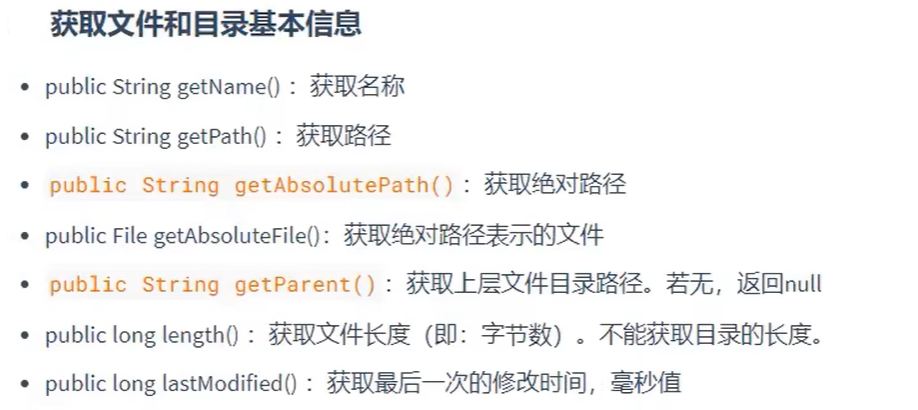

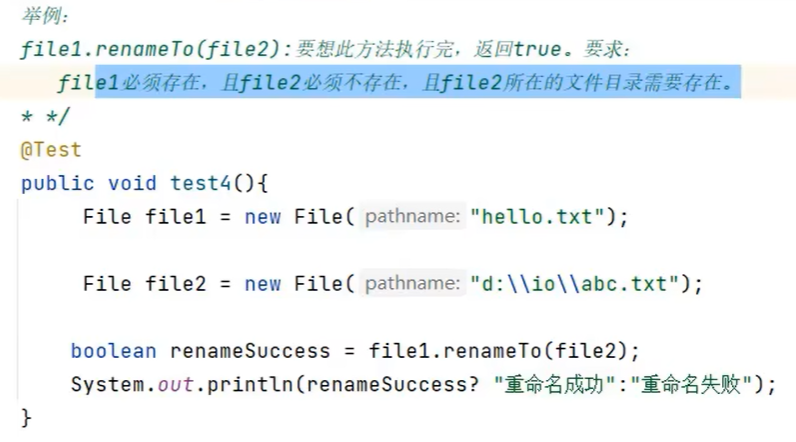
2.IO流
2.1概述
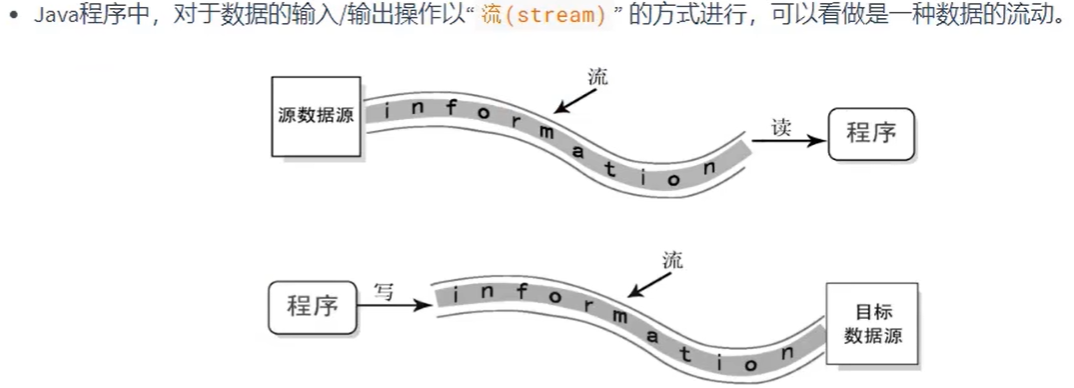


2.2分类



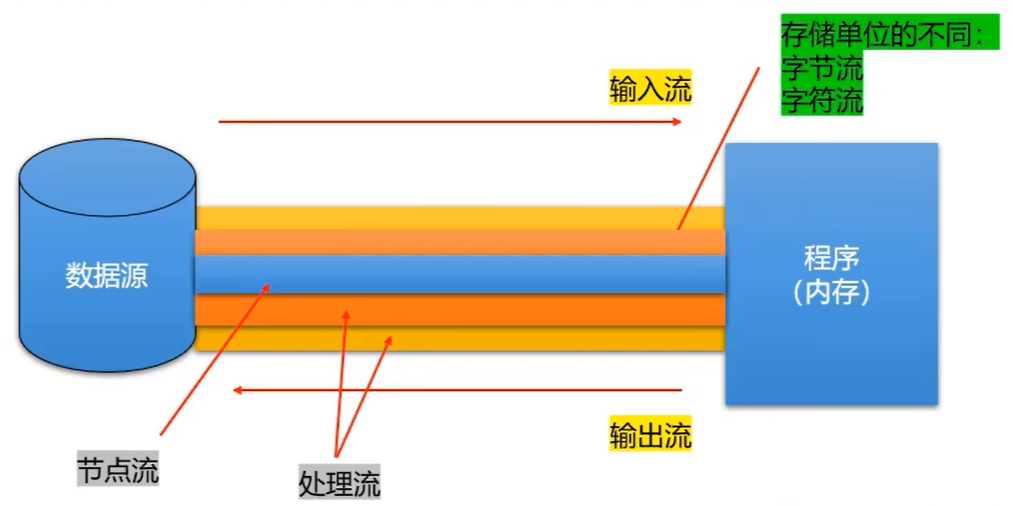
2.3流的API

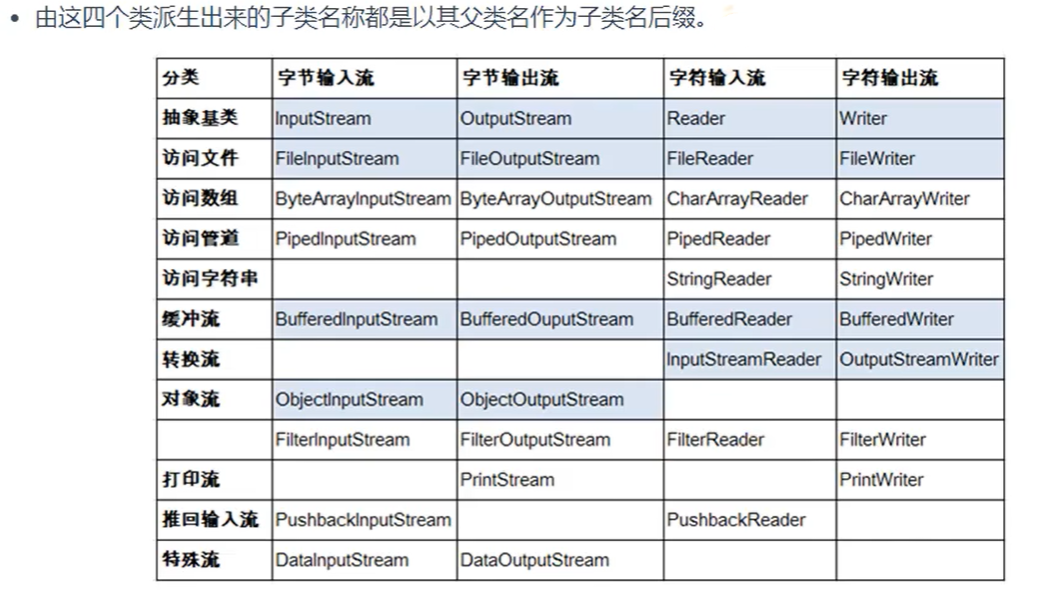
3.文件流(节点流)
3.1FileReader
读写文本文件用字符流
@Test
public void test(){
FileReader fr = null;
try {
//1.创建File类对象,对应一个文件
File file = new File("hello.txt");
//2.创建输入型的字符流,用于读取数据
fr = new FileReader(file);
//3.读取数据,显示在控制台上
//方式一:
// int data = fr.read();
// while (data != -1){
// System.out.print((char)data);
// data = fr.read();
//方式二:
char buffer[] = new char[5];
int len = fr.read(buffer);
while (len != -1){
for(int i = 0; i < len; i++){
System.out.print(buffer[i]);
}
len = fr.read(buffer);
}
} catch (IOException e) {
e.printStackTrace();
} finally {
//4.关闭流资源
try {
fr.close();
} catch (IOException e) {
e.printStackTrace();
}
}
}3.2FileWriter
@Test
public void test2() {
FileWriter fw = null;
try {
//1.创建File对象,指明操作的文件名称
File file = new File("info.txt");
//2.创建输出流
fw = new FileWriter(file);
//3.输出过程
fw.write("ykx666");
} catch (IOException e) {
e.printStackTrace();
}
//4.关闭资源
try {
fw.close();
} catch (IOException e) {
e.printStackTrace();
}
}3.3FileInputStream及FileOutputStream
读写非文本文件(如图片、音视频)用字节流
@Test
public void test(){
FileInputStream fis = null;
FileOutputStream fos = null;
try {
//1.创建相关的File类对象
File file1 = new File("sdz.jpg");
File file2 = new File("copy_sdz.jpg");
//2.创建相关字节流
fis = new FileInputStream(file1);
fos = new FileOutputStream(file2);
//3.数据的输入和输出
byte[] buffer = new byte[1024];
int len;
while((len = fis.read(buffer)) != -1)
fos.write(buffer,0,len);
System.out.println("复制成功!");
}catch (IOException e) {
e.printStackTrace();
}
//4.关闭资源
try {
fis.close();
} catch (IOException e) {
e.printStackTrace();
}
try {
fos.close();
} catch (IOException e) {
e.printStackTrace();
}
}
4.处理流

4.1缓冲流


4.1.1实现步骤

4.1.2实现代码
/*
* 使用BufferedInputStream/BufferedOutputStream复制一张图片
* @author yangkx
* @date 2023-05-22 19:48
*/
@Test
public void test(){
FileInputStream fis = null;
FileOutputStream fos = null;
BufferedInputStream bis = null;
BufferedOutputStream bos = null;
try {
//1.创建相关的File类对象
File file1 = new File("sdz.jpg");
File file2 = new File("copy_sdz2.jpg");
//2.创建相关字节流、缓冲流
fis = new FileInputStream(file1);
fos = new FileOutputStream(file2);
bis = new BufferedInputStream(fis);
bos = new BufferedOutputStream(fos);
//3.数据的输入和输出
byte[] buffer = new byte[1024];
int len;
while((len = bis.read(buffer)) != -1)
bos.write(buffer,0,len);
System.out.println("复制成功!");
}catch (IOException e) {
e.printStackTrace();
}
//4.关闭资源
//先关外层
try {
bis.close();
} catch (IOException e) {
e.printStackTrace();
}
try {
bos.close();
} catch (IOException e) {
e.printStackTrace();
}
try {
fis.close();
} catch (IOException e) {
e.printStackTrace();
}
try {
fos.close();
} catch (IOException e) {
e.printStackTrace();
}
}4.2转换流
4.2.1介绍


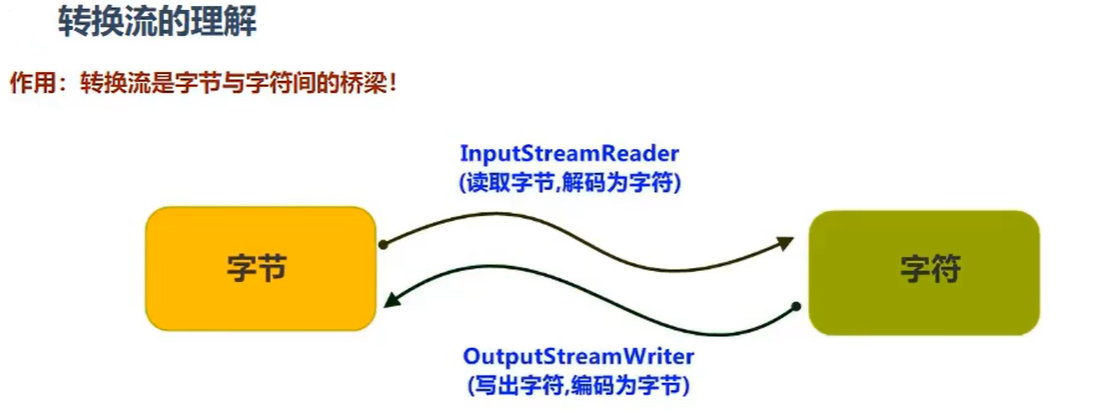
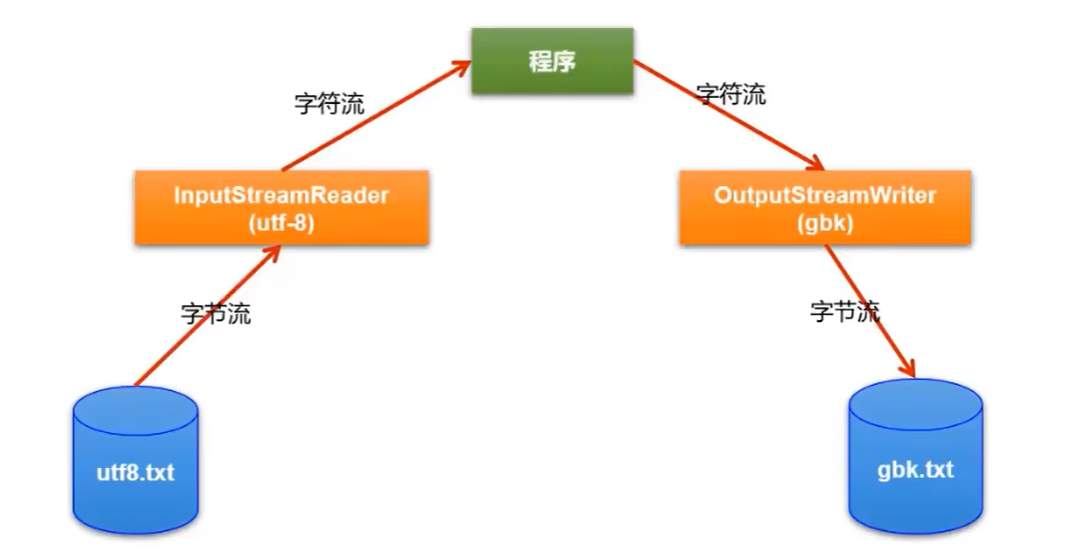
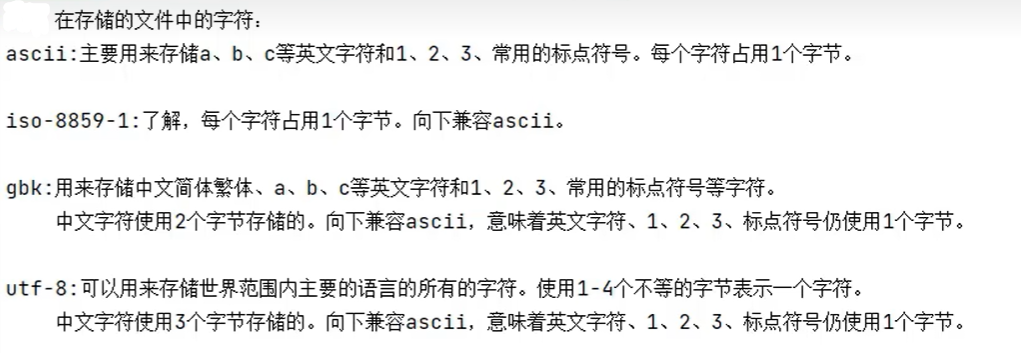
4.2.2实现
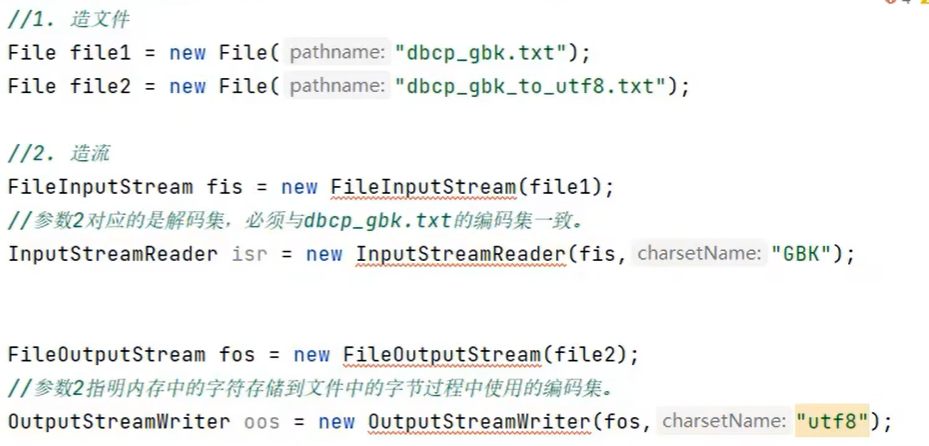

4.3对象流
4.3.1说明
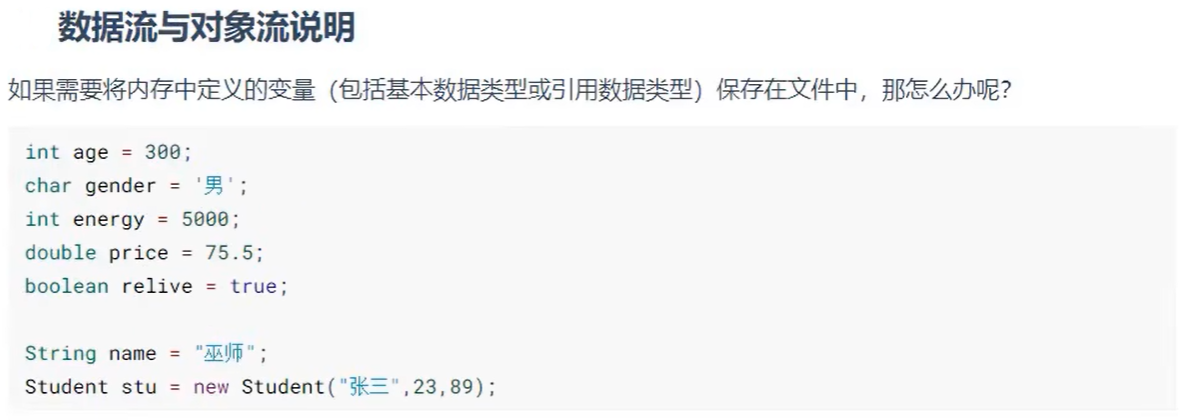






4.3.2对象的序列化机制
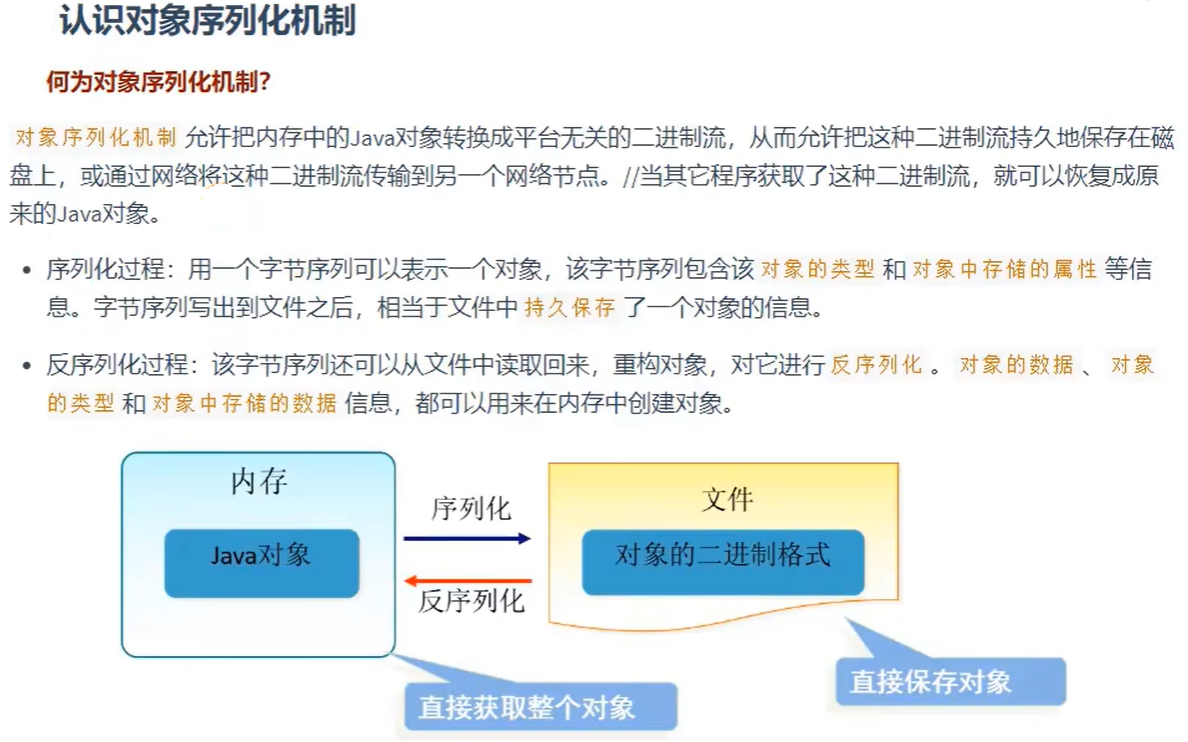
4.3.3使用
序列化过程
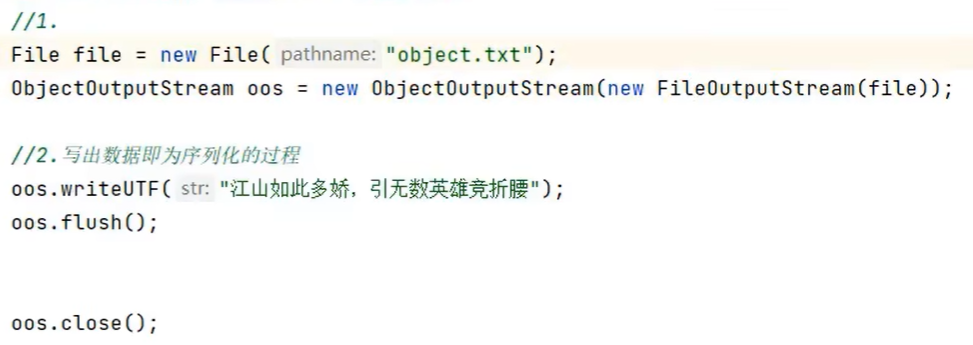
反序列化过程
内容来源于尚硅谷javase课程的ppt,仅作为学习笔记参考

